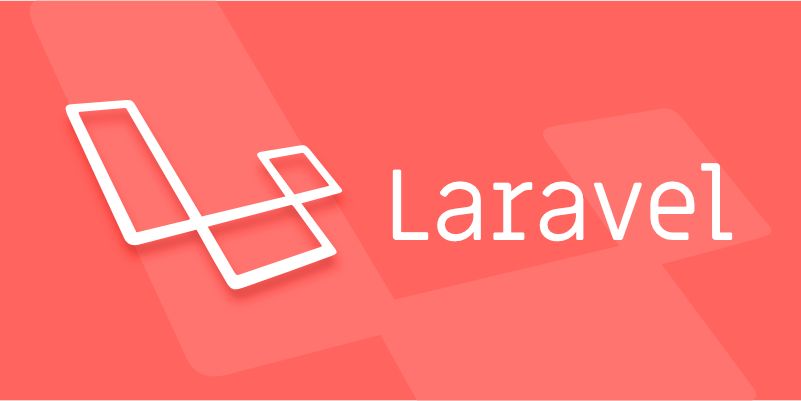How to deploy a Laravel application to a shared host?
Jul 20, 2025 am 03:58 AMWhen deploying Laravel applications to shared hosting, you need to pay attention to the following key steps: 1. Confirm that the host supports Laravel basic requirements, such as PHP ≥ 8.0, necessary functions and database support; 2. Upload project files to the host root directory and set the entry directory to a public folder; 3. Configure the .env file and generate the application key; 4. Set storage and bootstrap/cache directory permissions and clear the cache; 5. Ensure that the .htaccess file takes effect to handle URL rewrites. If you encounter permissions or function restrictions, you can contact customer service to solve the problem.

It is actually not difficult to deploy Laravel applications to shared hosting, but some details need to be paid attention to. Because the permissions and configuration of shared hosts are usually limited and cannot operate freely like VPS, some adaptation is required. Below are some practical steps and suggestions to help you successfully launch the Laravel project.

1. Basic requirements for ensuring that the host supports Laravel
Before you begin, confirm whether your shared hosting meets Laravel's running conditions:
- PHP version ≥ 8.0 (recommended by Laravel 9)
- Supports functions such as
file_put_contents,proc_open(some hosts are disabled by default) - MySQL or MariaDB database
- Support
.htaccessor can set custom portal directories (public)
Some host control panels (such as cPanel) can view PHP version and enable extensions. If certain modules (such as exif , fileinfo , opcache ) are not supported, you may need to contact customer service to enable them.

2. Upload Laravel project files
Shared hosts generally upload files through FTP or cPanel file manager. The recommended approach is:
- Run
composer install --optimize-autoloaderlocally to generate files required for the formal environment - Upload the entire Laravel project to the root directory of the host (for example, create a folder under
/public_html, such aslaravel_app) - But note: Only the content in the public folder should be publicly available
Therefore, you need to point the host's website entry directory to the public folder of Laravel. In cPanel, you can set the document root directory of "main domain" or "subdomain" to /public_html/laravel_app/public .

3. Configure .env and database connections
After uploading the file, you need to set up the .env file:
- Copy
.env.exampleas.env - Modify database connection information, such as:
DB_CONNECTION=mysql DB_HOST=localhost DB_PORT=3306 DB_DATABASE=your_database_name DB_USERNAME=your_db_user DB_PASSWORD=your_password
Then run php artisan key:generate to generate the application key. If you cannot run the Artisan command on the server (some shared hosts have CLI disabled), you can also generate the key locally and then manually fill in .env .
4. Set permissions and caches
The directories that require write permissions in Laravel include:
-
storage/ -
bootstrap/cache/
On shared hosting, the default permissions are usually OK, but sometimes these directories need to be manually set to writable (755 or 775).
In addition, it is recommended to clear the cache after uploading the project:
php artisan config:clear php artisan cache:clear php artisan route:clear php artisan view:clear
If you cannot run Artisan, you can clear the cache locally before uploading, or manually delete bootstrap/cache/*.php file.
5. Handle pseudo-static rules (.htaccess)
Laravel's public folder already has a .htaccess file for URL rewriting. If you find a 404 view on the access page, it may be because .htaccess is not effective.
Confirm the following points:
- Whether the host allows
.htaccess(some hosts are disabled by default) - Is
AllowOverrideset to All (you may need to contact customer service for this) - Whether the
.htaccessfile is uploaded correctly has not been ignored by the FTP software
The standard .htaccess content is as follows:
<IfModule mod_rewrite.c>
<IfModule mod_negotiation.c>
Options -MultiViews -Indexes
</IfModule>
RewriteEngine On
# Handle Authorization Header
RewriteCond %{HTTP:Authorization}.
RewriteRule .* - [E=HTTP_AUTHORIZATION:%{HTTP:Authorization}]
# Redirect Trailing Slashes If Not A File
RewriteCond %{REQUEST_FILENAME} !-f
RewriteCond %{REQUEST_FILENAME} !-d
RewriteRule ^(.*)$ index.php?/$1 [L]
</IfModule>Basically that's it
The key to deploying Laravel to a shared hosting are entry directory settings, permission controls, and pseudo-static rules. Although there are more restrictions, as long as you pay attention to these points, most problems can be solved. If you encounter permission denied or the function is disabled during the process, remember to contact the host customer service to see if the corresponding function can be enabled.
The above is the detailed content of How to deploy a Laravel application to a shared host?. For more information, please follow other related articles on the PHP Chinese website!

Hot AI Tools

Undress AI Tool
Undress images for free

Undresser.AI Undress
AI-powered app for creating realistic nude photos

AI Clothes Remover
Online AI tool for removing clothes from photos.

Clothoff.io
AI clothes remover

Video Face Swap
Swap faces in any video effortlessly with our completely free AI face swap tool!

Hot Article

Hot Tools

Notepad++7.3.1
Easy-to-use and free code editor

SublimeText3 Chinese version
Chinese version, very easy to use

Zend Studio 13.0.1
Powerful PHP integrated development environment

Dreamweaver CS6
Visual web development tools

SublimeText3 Mac version
God-level code editing software (SublimeText3)

Hot Topics
 Creating Custom Validation Rules in a Laravel Project
Jul 04, 2025 am 01:03 AM
Creating Custom Validation Rules in a Laravel Project
Jul 04, 2025 am 01:03 AM
There are three ways to add custom validation rules in Laravel: using closures, Rule classes, and form requests. 1. Use closures to be suitable for lightweight verification, such as preventing the user name "admin"; 2. Create Rule classes (such as ValidUsernameRule) to make complex logic clearer and maintainable; 3. Integrate multiple rules in form requests and centrally manage verification logic. At the same time, you can set prompts through custom messages methods or incoming error message arrays to improve flexibility and maintainability.
 Adding multilingual support to a Laravel application
Jul 03, 2025 am 01:17 AM
Adding multilingual support to a Laravel application
Jul 03, 2025 am 01:17 AM
The core methods for Laravel applications to implement multilingual support include: setting language files, dynamic language switching, translation URL routing, and managing translation keys in Blade templates. First, organize the strings of each language in the corresponding folders (such as en, es, fr) in the /resources/lang directory, and define the translation content by returning the associative array; 2. Translate the key value through the \_\_() helper function call, and use App::setLocale() to combine session or routing parameters to realize language switching; 3. For translation URLs, paths can be defined for different languages ??through prefixed routing groups, or route alias in language files dynamically mapped; 4. Keep the translation keys concise and
 Working with pivot tables in Laravel Many-to-Many relationships
Jul 07, 2025 am 01:06 AM
Working with pivot tables in Laravel Many-to-Many relationships
Jul 07, 2025 am 01:06 AM
ToworkeffectivelywithpivottablesinLaravel,firstaccesspivotdatausingwithPivot()orwithTimestamps(),thenupdateentrieswithupdateExistingPivot(),managerelationshipsviadetach()andsync(),andusecustompivotmodelswhenneeded.1.UsewithPivot()toincludespecificcol
 Sending different types of notifications with Laravel
Jul 06, 2025 am 12:52 AM
Sending different types of notifications with Laravel
Jul 06, 2025 am 12:52 AM
Laravelprovidesacleanandflexiblewaytosendnotificationsviamultiplechannelslikeemail,SMS,in-appalerts,andpushnotifications.Youdefinenotificationchannelsinthevia()methodofanotificationclass,andimplementspecificmethodsliketoMail(),toDatabase(),ortoVonage
 Understanding and creating custom Service Providers in Laravel
Jul 03, 2025 am 01:35 AM
Understanding and creating custom Service Providers in Laravel
Jul 03, 2025 am 01:35 AM
ServiceProvider is the core mechanism used in the Laravel framework for registering services and initializing logic. You can create a custom ServiceProvider through the Artisan command; 1. The register method is used to bind services, register singletons, set aliases, etc., and other services that have not yet been loaded cannot be called; 2. The boot method runs after all services are registered and is used to register event listeners, view synthesizers, middleware and other logic that depends on other services; common uses include binding interfaces and implementations, registering Facades, loading configurations, registering command-line instructions and view components; it is recommended to centralize relevant bindings to a ServiceProvider to manage, and pay attention to registration
 Understanding Dependency Injection in Laravel?
Jul 05, 2025 am 02:01 AM
Understanding Dependency Injection in Laravel?
Jul 05, 2025 am 02:01 AM
Dependency injection automatically handles class dependencies through service containers in Laravel without manual new objects. Its core is constructor injection and method injection, such as automatically passing in the Request instance in the controller. Laravel parses dependencies through type prompts and recursively creates the required objects. The binding interface and implementation can be used by the service provider to use the bind method, or singleton to bind a singleton. When using it, you need to ensure type prompts, avoid constructor complications, use context bindings with caution, and understand automatic parsing rules. Mastering these can improve code flexibility and maintenance.
 Handling exceptions and logging errors in a Laravel application
Jul 02, 2025 pm 03:24 PM
Handling exceptions and logging errors in a Laravel application
Jul 02, 2025 pm 03:24 PM
The core methods for handling exceptions and recording errors in Laravel applications include: 1. Use the App\Exceptions\Handler class to centrally manage unhandled exceptions, and record or notify exception information through the report() method, such as sending Slack notifications; 2. Use Monolog to configure the log system, set the log level and output method in config/logging.php, and enable error and above level logs in production environment. At the same time, detailed exception information can be manually recorded in report() in combination with the context; 3. Customize the render() method to return a unified JSON format error response, improving the collaboration efficiency of the front and back end of the API. These steps are
 Strategies for optimizing Laravel application performance
Jul 09, 2025 am 03:00 AM
Strategies for optimizing Laravel application performance
Jul 09, 2025 am 03:00 AM
Laravel performance optimization can improve application efficiency through four core directions. 1. Use the cache mechanism to reduce duplicate queries, store infrequently changing data through Cache::remember() and other methods to reduce database access frequency; 2. Optimize database from the model to query statements, avoid N 1 queries, specifying field queries, adding indexes, paging processing and reading and writing separation, and reduce bottlenecks; 3. Use time-consuming operations such as email sending and file exporting to queue asynchronous processing, use Supervisor to manage workers and set up retry mechanisms; 4. Use middleware and service providers reasonably to avoid complex logic and unnecessary initialization code, and delay loading of services to improve startup efficiency.






